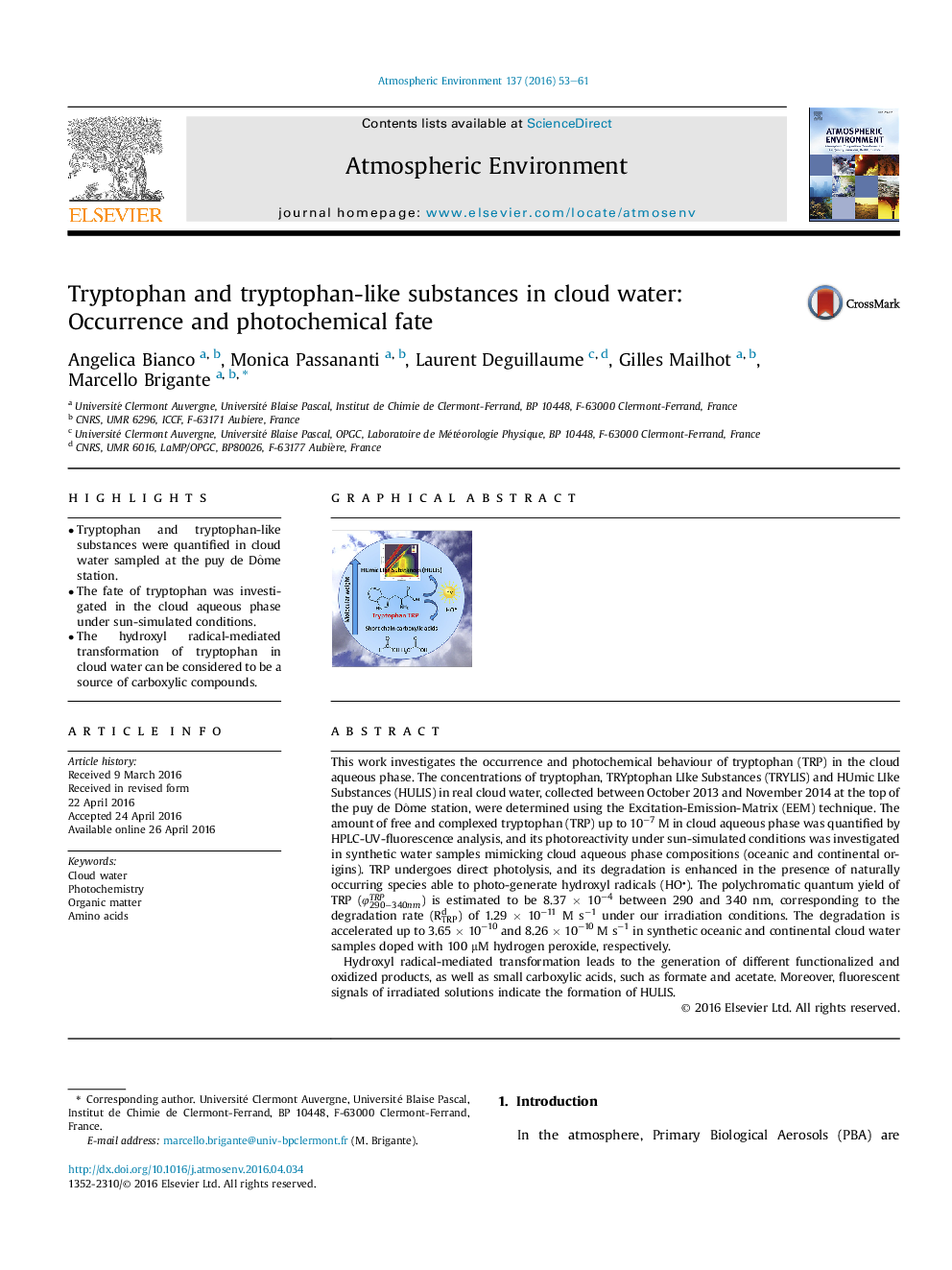| کد مقاله | کد نشریه | سال انتشار | مقاله انگلیسی | نسخه تمام متن |
|---|---|---|---|---|
| 4438046 | 1620337 | 2016 | 9 صفحه PDF | دانلود رایگان |
• Tryptophan and tryptophan-like substances were quantified in cloud water sampled at the puy de Dôme station.
• The fate of tryptophan was investigated in the cloud aqueous phase under sun-simulated conditions.
• The hydroxyl radical-mediated transformation of tryptophan in cloud water can be considered to be a source of carboxylic compounds.
This work investigates the occurrence and photochemical behaviour of tryptophan (TRP) in the cloud aqueous phase. The concentrations of tryptophan, TRYptophan LIke Substances (TRYLIS) and HUmic LIke Substances (HULIS) in real cloud water, collected between October 2013 and November 2014 at the top of the puy de Dôme station, were determined using the Excitation-Emission-Matrix (EEM) technique. The amount of free and complexed tryptophan (TRP) up to 10−7 M in cloud aqueous phase was quantified by HPLC-UV-fluorescence analysis, and its photoreactivity under sun-simulated conditions was investigated in synthetic water samples mimicking cloud aqueous phase compositions (oceanic and continental origins). TRP undergoes direct photolysis, and its degradation is enhanced in the presence of naturally occurring species able to photo-generate hydroxyl radicals (HO). The polychromatic quantum yield of TRP (ϕ290−340nmTRP) is estimated to be 8.37 × 10−4 between 290 and 340 nm, corresponding to the degradation rate (RTRPd) of 1.29 × 10−11 M s−1 under our irradiation conditions. The degradation is accelerated up to 3.65 × 10−10 and 8.26 × 10−10 M s−1 in synthetic oceanic and continental cloud water samples doped with 100 μM hydrogen peroxide, respectively.Hydroxyl radical-mediated transformation leads to the generation of different functionalized and oxidized products, as well as small carboxylic acids, such as formate and acetate. Moreover, fluorescent signals of irradiated solutions indicate the formation of HULIS.
Figure optionsDownload high-quality image (291 K)Download as PowerPoint slide
Journal: Atmospheric Environment - Volume 137, July 2016, Pages 53–61
